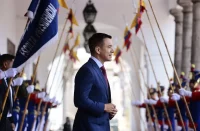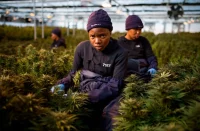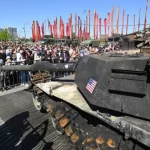These days, the drug mafia theme attracts permanent media coverage. One of the aspects that cannot be avoided in the context is the involvement of the financial sector – for hefty risk premiums – in money laundering for the narcotics business.
Banks and the Drug – Business: Seamless Integration Rather Than Partnership
Last summer, The Guardian featured a remarkable account “Global Banks Are the Financial Services Wing of the Drug Cartels” by Ed. Vulliamy. Contrary to the conclusions invited by the extremely informative paper, the title does sound as if the financial services play a secondary role in the tandem. There is a widespread tendency to believe that, while serious banks are occasionally caught red-handed, they engage in money-laundering as mere contractors rather than play key roles in the global drug business. It appears in this light that regulation and oversight in the financial sector may be implemented as background processes and need not be placed on the list of the anti-drug priorities.
The above approach is in fact adopted by countries and international organizations alike. They focus on the drug mafia which, from the perspective, is a conglomerate of groups producing, processing, storing, trafficking, and selling drugs in quantities or on an individual basis. Another common term to designate the groups is drug cartels. The budgets dedicated to fighting them have swelled to enormous proportions.
When, in 1972, US President R. Nixon declared a war on drugs, the total linked to the campaign was $110m, but Obama’s anti-drug plan for 2013 – a 1.6% hike compared to 2012 – weights slightly under $26b, with the multi-billion state budgets serving the same purpose not included in the figure. The impression in the meantime is that the financial sector evades the part of the scrutiny it deserves, the assumption being that regulators should cope entirely with the job. Under the arrangement, the key monitoring mission rests with the US Federal Reserve but, paradoxically given the nature of what has to be done, the Fed is a private corporation, not a branch of the US executive authority.
The result attributable to the functional mismatch is that, according to Russian anti-narcotics agency chief V. Ivanov, only 10-15% of the global drug supplies end up being confiscated, and the interception level in the operations which target drug-related money-laundering stalls at 0.5% [1].
The truth to be kept in mind is that as of today the merger between the financial sector grands and the drug mafia in its classic forms – the cartels and syndicates – is an accomplished fact. No border exists any longer between global-scale banks and drug cartels and, consequently, between laundered and legally clean money – a lot of the funds believed to belong to the latter category actually fall within the former. The present alliance between banks and drug cartels is best described as the drug-banking mafia or the drug-banking business. This transnational force has a potential to exercise virtually unlimited influence over all aspects of the existence of modern societies such as the economy (industry, agriculture, services), the academia, culture, or domestic and foreign policies of various countries. The socioeconomic model currently materializing in the majority of the world’s countries can be interpreted as a hitherto unstudied brand of capitalism, namely, the drug-banking capitalism… Hierarchy of the Modern Drug Mafia
Broadly understood, the present-day drug mafia includes three hierarchic levels.
Level 1. The groups positioned at the initial point upstream and at the outlet point downstream the drug supply chain.
• The groups organizing drug cultivation, performing the initial processing, or buying drugs from narcotics farmers.
• The groups dealing drugs to individual users.
Level 2. Groups handling the wholesale drug supply. In the supply chain, they process, package, store, and traffic drugs (internationally as necessary), and organize wholesale supplies. The groups of this level are traditionally referred to as drug cartels and syndicates, and their heads – as drug lords.
According to expert on organized crime Misha Glenny, “The cartel is a holding company, an agglomeration of small, flexible mafia groups” boasting a considerable extent of decentralization [2]. In the XX century, the biggest drug cartels – notably, Medellín and Cali – were based in Columbia. A DEA survey gives a reasonable idea of the Cali cartel potential: the group has a budget of $4-8b annually and is managed like a smoothly running business with the help of an intricate system of phones, faxes, pagers, and computers. Moreover, Cali has an intelligence network in no way inferior to the intelligence services of most developing countries and controls the airport, the phone company, and the taxis in the city of Cali, thus knowing who comes to the place or leaves it, who works for the police, and who has been in touch with the US agencies”[3].
Strictly speaking, the term drug cartel does not quite apply to formations like Cali. Rather, it would befit a concert of several drug groups entering into a market-sharing agreement. Columbian drug groups, for example, used to cut deals on their respective market niches for marijuana and cocaine in the US, with Cali getting New York City based on the accords [4]. Cali and Medellín are, upon scrutiny, drug syndicates, the type of organization implying the combination of the independence of the enterprises involved with coordinated market supply.Groups cultivating and pre-processing drugs exist in Columbia, Mexico, Afghanistan, the Golden Triangle countries, South Africa, etc. All of them deliver the narcotic output to the same “company” which markets it on a wholesale basis. Altogether, the arrangement can be regarded as a classic syndicate. Several syndicates of the type may sustain a market-sharing agreement, creating a cartel. Every major country – the US, Great Britain, Germany, France, and others – is a large market carved up by a number of syndicates with supply chains stretching from the cultivation to the destination countries. The bosses of the Afghan syndicates, therefore, run their operations from Turkey, Europe, or the US, staying thousands of miles away from the Afghan poppy farms. As a general rule, drug syndicates function internationally.
The present geographic distribution of the drug trafficking hubs and routes is profoundly different from the one known from the XX century. Nowadays, leadership in this underworld is exercised by Mexican and Afghan drug groups supplying cocaine or opium and heroin respectively. The criminal market-sharing agreements are frequently ignored, triggering bloody conflicts – sometimes, real wars – over the sales niches [5].
Level 3. The groups having no direct contact with drug supplies. Banks, secret services, and media are the main institutions comprising this level in the drug mafia hierarchy. All of them are completely legal from the standpoint of status. In this connection the present paper will touch upon the banks and secret services below. It should be noted that Level 3 also includes legislators and judiciaries along with other officials from the ranks of the executive authority. In an ensemble, they act as a tightly knit network spanning across national borders and projecting its capabilities globally. The massive liberalization of international transit – for individuals, products, finances, and information – which commenced three to four decades ago, the phenomenon dubbed globalization in the 1990s, made it considerably easier for the worldwide drug mafia to come into being. Essentially, the drug mafia can be thought of as a global narcotics corporation with branches in many of the nation-states. The objectives pursued at Level 3 are strategic in character:
• The whitewashing of the cash flows generated by drug sales;
• Revenue investment in various sectors of the economy;
• Organization and security of drug supply operations at Level 1 and Level 2;
• The creation of the conditions favorable to the expansion of the drug business in various countries.
To be continued
NOTES:
1. Global Drug Flows as a Factor Contributing to the World’s Deepening Economic Crisis. Talk by Russian Federal Anti-Narcotics Agency Director V.P. Ivanov. Washington, November 18, 2011.
2. Misha Glenny. The Secret Rulers. Who Runs the World. Moscow, Eksmo-Algoritm Publishers, 2010
3. Ibid.
4. Ibid.
5. A war between a large number of drug groups has been raging continuously in Mexico for decades. As of late, it spun into a de facto civil war with the death toll of around 50,000.
Source: Strategic Culture Foundation














Pingback: Who Runs the Global Drug Mafia (II) | Oriental Review
The Optimal Synthesis of Drugs,Corruption and Money Laundering – which is OFF THE RADAR of law enforcement is in GOA
The Goan Drug Model is the best in the world.dindooohindoo
Step 1
Nigerian,Russian,Georgian and Israeli Drug Lord have licensed beaches, where NO INDIAN can ENTER,and where, they sell drugs to THEIR OWN on credit or barter (barter being sex or courier services).The Pandoo Police does NOT ENTER these “no entry zones”.
But this is also there, in Pattaya – so there is :not too much” of an innovation here
Step 2
The Drug Dealers have THEIR DRUG STASHES, in part, seized by the Goan Pandoo Police – which stocks them in the ANC (Anti-Narcotics Cell) Godowns.Now the beauty is that, it is under the ORDER OF THE COURT (whose Judges know nothing about drugs)– but the DRUGS are in the ACTUAL possession of the PANDOO Police, as the Court has no facility or skill to stock the drugs
Then what ?
Then the Goan Pandoo Police – STEALS the DRUGS from the ANC Godowns – and sells it back, to the same Drug Dealers.The Goan Courts have NO CLUE as they are high on Fenee.Y do the Russians and Israelis do this ? The Drug Dealers get the drugs back at low rates,and they save on the cost of storage,and also hafta to police,as they do STRATEGIC PROCUREMENT,from the Police.In another twist,the Dealers get drugs of a higher grade and quality,than WHAT THEY ALLOWED TO BE SEIZED,by the Pandoo Police.So the Dealers save on the procurement costs from the SILENT FORESTS or for imported Cocaine
This is pure Management excellence
Step 3
The Pandoo Police DO NO SURPRISE CHECKS OF THE DRUGS STOCKS.For several years, there was no meeting of the DDC – Drugs Destruction Committee in Goa – and so, that gives the Police an EXCUSE TO STEAL MORE, and REPLACE the same,with impure drugs – claiming natural contamination/degradation, by rain and heat ,or that rats and lizards, ate it !
Rat and lizard meat in Goa, is a delicacy and an aphrodasiac and is also prescribed in the RAMAYANA – as a diet for KINGS !
Book IV : Kishkindha Kanda – Chapter 17
पंच पंच नखा भक्ष्या ब्रह्म क्षत्रेण राघव |
शल्यकः श्वाविधो गोधा शशः कूर्मः च पंचमः || १-१७-३९
“Raghava, five kinds of five-nailed animals, viz., a kind of wild rodent, a kind of wild-boar, a kind of lizard, a hare and fifthly the turtle are edible for Brahmans and Kshatriya-s. [4-17-39]
The longer the time for stock checks and DDC,the more the opportunity to steal,replace and barter the drugs.
The Pandoo Police and Pandoo Courts have NO CLUE, about the Stock of Drugs, held in custody,by type,ageing,quality,condition,location and the persons w.r.t whom, they relate,as under:
o Type – MDMA, brown sugar, cocaine, ganja, ecstasy ,LS Liquid, LSD Paper,Ketamine,Amphetamine,Charas,DMT,Heroin etc
o Location of drugs storage
o Department – ANC as well as others
o Persons – Accused from whose possession they were collected
o Packaging – Packets, Bags etc with seals/markings etc
Even the Pandoos of the Goa Police who do the physical verification of drugs, have no technical or forensic skills to verify the drugs ageing,quality and exact quantity.
Even when DDC meets and destroys drugs there is no forensic test and tapes of the destroyed material, and thus,the pure drugs, go back to the cartels – and what is burnt is chalk and junk drugs !
Now the Drug Mafia has set up full fledged DRUGS MANUFACTURING UNITS IN GOA IN SEZs WITH TAX INCENTIVES – AS A 100% EOU ! THEY CALL IT MAKE IN INDIA – WITH ISRAELI SKILLS ! THEY CALLED IT “PROJECT VITAMIN” – VITAMIN “M” — M FOR “MONEY”
https://www.hindustantimes.com/mumbai-news/ketamine-drug-racket-trio-paid-70k-a-month-to-goa-politico/story-KUBDVipH2swYdSiUtB2C7J.html
Step 4
The Russians and others use only foreigners as intermediaries and POS agents, are Indian weasels.Foreigners will get deported and will spend minimal time in jail.In addition, the Drug Lords GET dealers and users CAUGHT by the Pandoo – and then broker their release – via the Pandoo Police who take a bribe,which is shared with the Pandoo Police
This ensures performance of the Pandoo Police,and an INDUCED fear among dealers and users,to obey the diktats of the drug mafia – to whom beach security,is OUTSOURCED,by the Goan Pandoo Police
Then we come to the Goan Media which is known for extortion like Herald Goa from Casino Pride
https://timesofindia.indiatimes.com/city/goa/FIR-in-casino-case-against-local-English-dailys-officials/articleshow/53470453.cms
The Drug Dealers use their contacts in legit outfits (where drugs are used),id.est.,resorts to place adverts,in the media.When that fails,they contact the media agencies to bribe media.And when that fails,they use the Pandoo Police to pay off the media.The adverts are a PAY OFF TO THE MEDIA – and the adverts are worded so beautifully that even Gabriel would descend at the Drugs venue to partake in the snorting orgy.
Till a few years ago,the Goan Media used to carry Matka (gambling)adverts and Matka Tips in the Newspapers
Step 5
Then we have to wash the cash.The Indians are secure – but the Russians and others have to find other ways.Each Drug Lord has his own ways.Nigerians use Couriers.Russians use PROPERTY DEVELOPMENT in GOA.Israelis do IMPORT AND EXPORT.All under the nose of the Goa State and Indian Customs.
Property development is buying a Rs 100 crore land for 20 crores in wire, and the rest in cash.Then Construction – overstate and recover the cash paid (at the time of land purchase).Then sell the flats to Russians at inflated rates with loans from foreign banks – and ensure that the overstated construction costs – and its depreciation offsets the profits.Then sign a property management contract with the flat owners, to rent and manage the flats.Then invite Russians to rent these flats – where drug and sex flow – just like the Garden of Eden !
And then after a few years,use the Property Management company to do another LAND ACQUISITION.
This is called the “Property Management Business”
IT IS ALL A COSMIC CONGRUENCE OF EVOLUTION IN INNOVATION and the WORLD HAS MUCH TO LEARN FROM THIS PORTUGESE COLONY
Pingback: Η μαφία των ναρκωτικών και οι τράπεζες | Τerrapapers